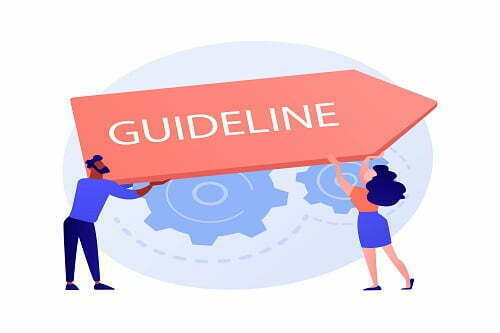Table of Contents
As an aspiring professional, you will have to attempt several aptitude and English tests along the path of your career. The sole purpose of these exams is to check if you’re ready to take that next step – be it going to college, getting a job, or securing a promotion. This is why they test your communication, time management, and problem-solving skills. And sentence correction questions are a great way to do that!
These questions measure your ability to recognize grammatically and syntactically incorrect sentences and modify them accordingly. Knowing the rules behind sentence formation will allow you to phrase and communicate your ideas as clearly as possible. So let’s go through this step by step-
- Possess the right diction in speech as well as writing.
- Have effective and clear expression.
- Practice grammatically sound expression of ideas and self.
Knowing how to construct and deliver correct sentences is key to making an impact on the professional community. You may be attempting to crack an exam, or working to create an impressionable application for your preferred school. In either case, learning how to correct sentences and clearly communicate your ideas will benefit you greatly no matter what field you select.
Here are our top 7 tips for sentence correction-
1. Shorten your sentences
A general rule of thumb for written and spoken English is to be efficient with your words. Seems confusing? Let’s break it down-
- Understanding what concept is being conveyed is key.
- Once you have written or read a sentence, pay attention to the keywords and phrases that highlight the intended concept.
- Shorter and clear sentence construction can deliver your idea more effectively than longer and wordier sentences.
- One of the best ways to frame shorter sentences is by using as few words as possible.
- Lastly, create a grammatically correct sentence that conveys exactly what you intend.
Side note: If you are preparing for your IELTS test, work on delivering shorter and concise sentences. This will create an impact with your examiner that will grant you higher scores!
2. Learn the rules

Consider spending some time learning the rules of sentence formation and correction. Cover all essential topics that compromise written and verbal communication, such as-
- Clauses
- Subject-verb agreements
- Punctuations
- Pronouns
- Ambiguous referents, and more
Learning the rules of English before beginning exam preparations or drafting your essays is a great way to strengthen your foundation in the language. Going back to basics will ensure you are clear on the language concepts.
3. Spot the errors
Once you have read or drafted a paragraph, spend some time analyzing what you have written. This is an essential step in sentence correction. While it may be difficult to pinpoint errors when writing or reading for the first time, a second look will prove very useful.
Reading through a sentence a second or third time will help you pinpoint errors primarily because you are actively looking for them. Therefore, any unnecessary words or phrases can be eliminated, effectively shortening the sentence.
Knowing the grammatical rules can help you spot errors faster. For example, looking for time indicators, such as during, after, and before, can help you find verb tense errors quickly.
4. Learn idioms
You may come across idioms from time to time in your favorite novels and blogs. However, learning how to use idioms in everyday constructions can be helpful to structure your sentences.
Understanding this will additionally come in handy when preparing for sentence correction questions. The idiom questions consist of incorrectly used idioms and a grammar rule that is broken. You will also have to select an answer that has the right idiom and honors the grammar rule.
Their usage can vary depending upon prepositions, forms of comparison, and correlatives. Understanding the factors of idiom usage can help you answer sentence correction questions and frame your sentences effectively.
Learning this can be especially useful for non-Native English speakers preparing college applications or studying to clear popular entrance tests.
5. Order of the words

The placement of different words and phrases in a sentence can affect the meaning of the sentence to a significant extent. This is a common sentence correction method to look out for when speaking and writing or answering a related question.
Shifting even a single word from the right position in a sentence can dramatically alter its grammatical as well as intended meaning. One of the most common and recognized orders of words in a sentence is-
Subject + Verb + Object + An Adverb of Place + An Adverb of Time
For example, Robert meets Sara at the mall every Sunday.
Follow this general rule and you should be good to go.
6. Avoid repetition
One of the most common mistakes made when writing or speaking English is the repetition of words. Repeating words often creates redundancy in a sentence.
So how do you identify it? Well, repetition occurs when the intended message is expressed twice in a single sentence.
An example of this is – Please revert back to my email.
So, the phrase “revert back” is repetition because revert essentially means a response.
Repetition is among the few errors that are spotted quite easily for sentence correction. Once the repetition is removed, the sentence constructed is concise and understandable.
Regardless of whether you are writing a letter or an email to personal or professional contact, go through your work to spot repetitions. This will help you create clear-cut content that delivers the message effectively.
7. Avoiding speaking/writing in passive voice

A common mistake made in written and spoken English is the writer/speaker adopting a passive construction of sentences. In passive voice, the regular order of subject and also object is reversed.
An example is:
Active Voice – Wren eats an apple.
Passive Voice – The apple is eaten by Wren.
Glancing through the above sentences can easily help pinpoint the problems with passive voice. Passive constructions are often significantly awkward and wordier as opposed to active sentences. You can practice switching from passive to active voices in everyday conversations. Sentence correction is a necessary tool that, when used, can drastically improve the quality of messages delivered.
So by following the above tips, you can start speaking, writing, and learning sentences that are aligned with grammatical rules. This will also help you put your best foot forward . . . figuratively!
FAQs
Q1. How do I prepare for sentence correction questions in GMAT?
Answer – Begin by studying basic sentence construction rules and work on practicing each of the concepts thoroughly.
Q2. Where can I learn more about basic sentence formation?
Answer – There are several online resources and platforms available that are designed to teach basic sentence formation and grammatical rules. Check these top English-speaking courses to get started!
Q3. Why are active sentences preferred over passive sentence construction?
Answer – Active construction is generally preferred because it is a lot less wordy and delivers the intended message without creating too much confusion.
If you have any doubts, feel free to reach out to us! You can also comment below and drop your thoughts.
If you like this blog you may also like – 50 difficult words with meaning.






